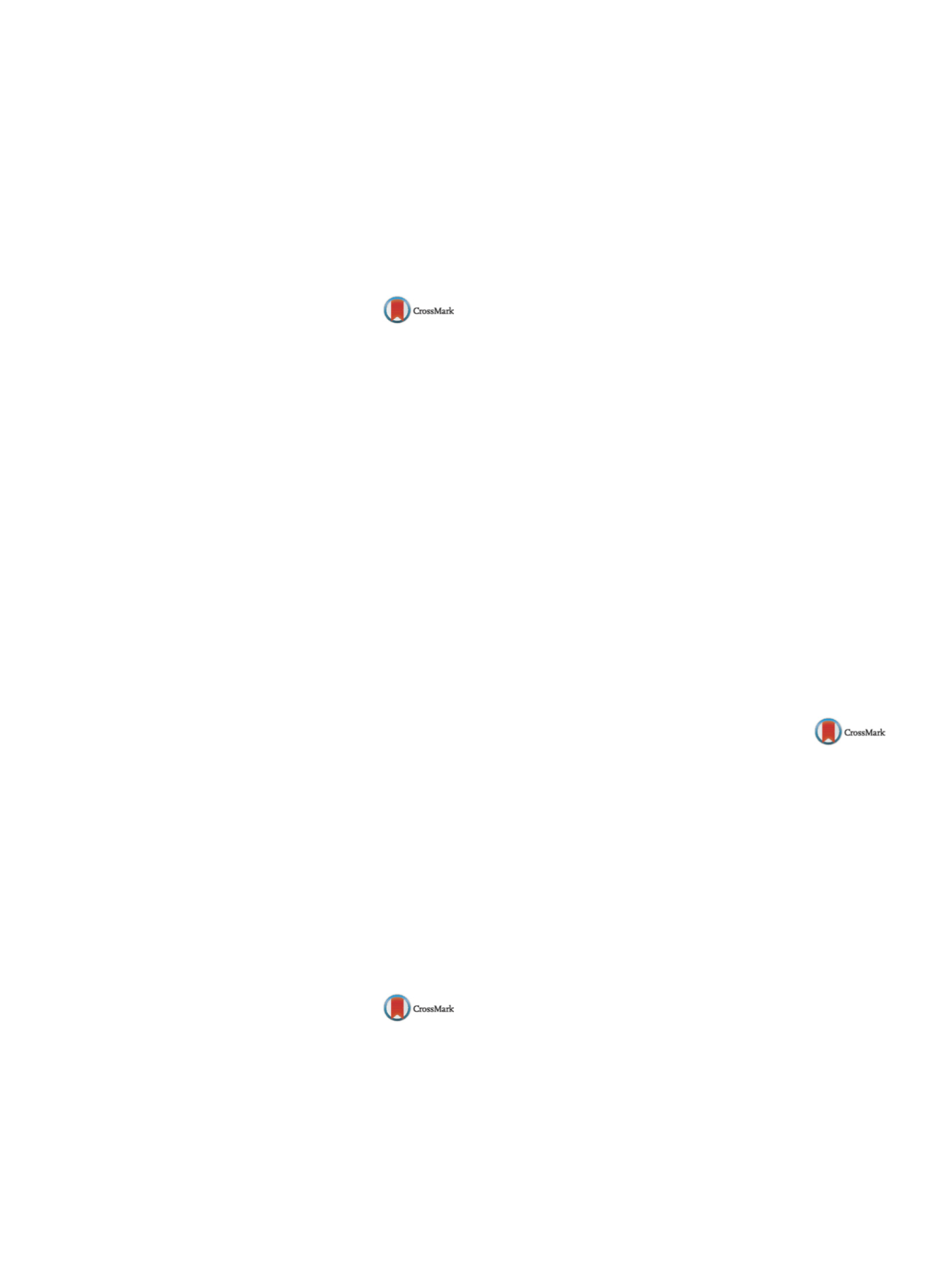

S650
25th European Congress of Psychiatry / European Psychiatry 41S (2017) S645–S709
level (
P
= 0.04). The prevalence of depressive symptoms was 42.1%.
It was correlated to the unknown cause of kidney failure and the
short duration haemodialysis (
P
= 0.03).
Conclusion
These data suggest that depression and anxiety are
highly prevalent in elderly patients with renal failure on dialy-
sis. This result shows the need for interdisciplinary teamwork in
improving the quality of life of those patients.
Disclosure of interest
The authors have not supplied their decla-
ration of competing interest.
http://dx.doi.org/10.1016/j.eurpsy.2017.01.1082EV0753
New insights in the pharmacotherapy
of psychosis: The example of
Parkinson’s disease psychosis
A. Fontaine
1 ,∗
, G. Radu
21
University Lille, CHU Lille, Department of Psychiatry, Lille, France
2
Memorial University, Psychiatry, St John’s, Canada
∗
Corresponding author.
Introduction
With 10 million of patients across the world,
Parkinson’s disease is the second most common form of neu-
rodegeneration, after Alzheimer’s. Among half of patients develop
psychotic symptoms, such as visual hallucinations and delusions,
which are correlated with higher rate of placement in nursing
home, are difficult to treat and severely affect quality of life, making
Parkinson’s disease psychosis (PDP) a major public health issue.
Objectives
The aim of this study is to identify treatment options
that could be used to treat PDP and clarify underlying pathophysi-
ology.
Method
We conducted a literature review on Pubmed, Gog-
gle scholar and Cochrane library, using a combination of the
following: “Parkinson’s disease Psychosis” “visual hallucinations”
“Pimavanserin” “Clozapine” “atypical anti-psychotics” 120 articles
were screened.
Results
Considering that hallucinations arise fromoveractivation
of dopaminergic receptors, treatment options include reducing the
dopaminergic drugs used to control motor symptoms; using atyp-
ical anti-psychotics such as Risperidone, Olanzapine, Quetiapine,
which often results in the worsening of extra-pyramidal symp-
toms. Another option is the use of lowdoses of Clozapine, which has
been proven efficient with no worsening of non-motor symptoms,
suggesting the implication of other pathways, such as serotonin.
Finally, Pimavanserin, a 5-HT2A receptor inverse agonist, without
any dopaminergic activity, has been demonstrated to be effective
in the treatment of PDP, well tolerated and easy to use.
Conclusion
Serotonin inverse agonists represent a major break-
through in the pharmacotherapy of PDP, and may lead the way
to changes in the treatment of schizophrenia and other psychotic
disorders.
Disclosure of interest
The authors have not supplied their decla-
ration of competing interest.
http://dx.doi.org/10.1016/j.eurpsy.2017.01.1083EV0754
Visual hallucinations in elderly
people: Early dementia, psychosis or
Charles Bonnet syndrome? Review
and case report
M. García Moreno
1 ,∗
, A. De Cos Milas
2, B. Poza Cano
3,
L. Beatobe Carre˜no
21
CSM Majadahonda, Hospital Universitario Puerta de Hierro
Majadahonda, Psychiatry, Madrid, Spain
2
CSM Móstoles, Hospital Universitario de Móstoles, Psychiatry,
Madrid, Spain
3
CE San Carlos, Hospital Universitario El Escorial, Psychiatry, Madrid,
Spain
∗
Corresponding author.
Introduction
Charles Bonnet Syndrome (CBS) is an uncommon
disease that involves visual hallucinations in visually impaired indi-
viduals, in absence of cognitive impairment or psychiatric illness,
although some authors propose CBS as an early maker of dementia.
Objectives
Show the importance of differential diagnosis in indi-
viduals with presence of visual hallucinations, with distinction of
CBS from others psychiatric or organic disorders such as hypno-
gogic and hypnopompic hallucinations, epileptic phenomenon,
Parkinson disease, dementia, delirum tremens or late-onset psy-
chosis.
Methods
Literature review about visual hallucinations in people
with psychiatric illness, dementia or in absence of these status,
followed by a case report of a patient who met criteria for CBS.
Results
Eighty one-years-old female with no previous psychi-
atric illness, experience suddenly visual hallucinations (animals,
insects) with secondary anxiety, fear and insomnia as well as dis-
ruptive behaviour (throw lye to kill the animals) and delusional
interpretations of the hallucinations considering them as a divine
proof. Clinical exam, neuroimaging tests and SPECT confirmed
just a minimal cognitive impairment nor suggestive of dementia.
She had personal history of cataracts and macular degeneration,
with no other medical condition. Olanzapine was prescribed but
it was withdrew because of adverse effects. Later, haloperidol was
introduced with well tolerance and symptom’s recovery ad inte-
grum.
Conclusions
Charles Bonnet syndrome is a rare condition that
may sometimes be the beginning of a dementia. Medical evalua-
tion and complementary tests help differential diagnosis in order to
reject others psychiatric/somatic disorders. Neuroleptic and anti-
epileptic treatment should be useful to control symptoms.
Disclosure of interest
The authors have not supplied their decla-
ration of competing interest.
http://dx.doi.org/10.1016/j.eurpsy.2017.01.1084EV0755
Mistreatment of Alzheimer’s patients:
Predictive factors
F. Ghali
1 ,∗
, M. El Karoui
1, L. Robbana
1, R. Beji
1, G. Jmii
1,
M. Zghal
1, I. Ben Ghzaeil
1, L. Jouini
1, R. Rafrafi
21
Razi Hospital, Psychiatry, Mannouba, Tunisia
2
Mongi Slim, Psychiatry, La Marsa, Tunisia
∗
Corresponding author.
Introduction
Violence against elderly persons is an intricate
social, legal and ethic issue. Alzheimer’s patients are the most vul-
nerable individuals to mistreatment and neglect. The aggressor can
be even the main helper of the patient. We noticed a wide underes-
timation of this phenomenon, which remains taboo subject in our
society.
Objectives and methods
– The aim of our study is to identify pre-
dictive factors of mistreatment of Alzheimer’s patients through a
prospective and descriptive study, within patients following in the
department of neurology in Razi’s hospital.
– we evaluate cognitive function (MMSE) and the importance of
behavioural disorders.
– we explored helper’s socio-demographic characteristics and the
quality of aid relationship.
– anger and hostility within relationship were estimated through
family attitude scale.
Results
Our sample accounts 60 informal caregivers predomi-
nately female (91.7%) with an average age of 49.67 years, mostly
are married (71.66%) and jobless (38.88%):
– in 78.3% of cases, caregivers spent about 12 to 24 hours per day
with Alzheimer’s patient.


















